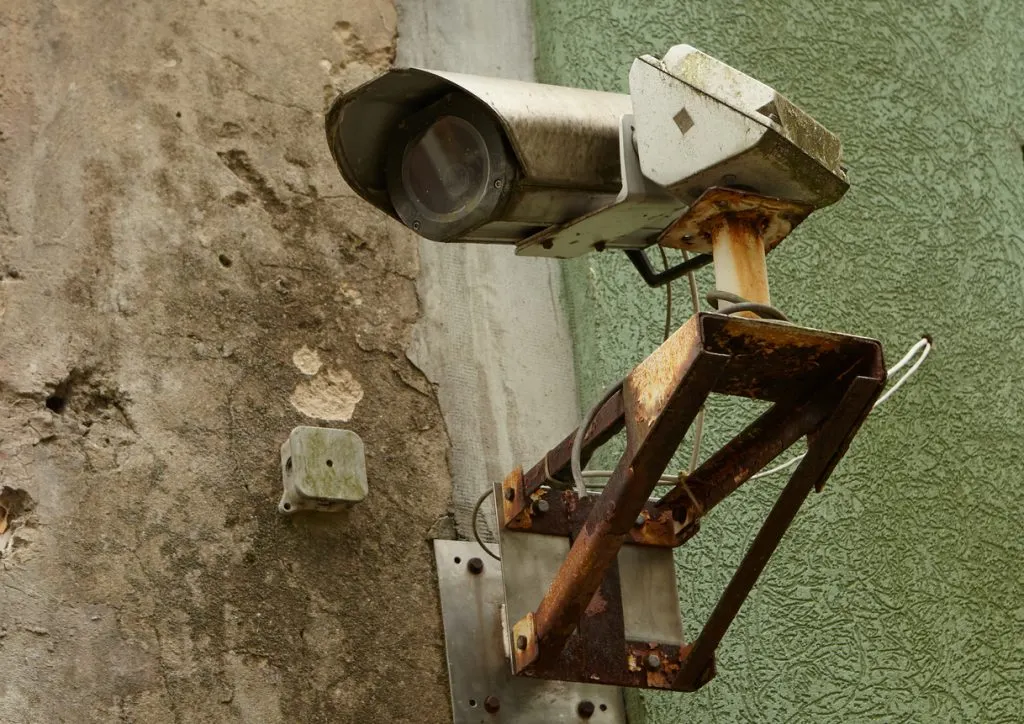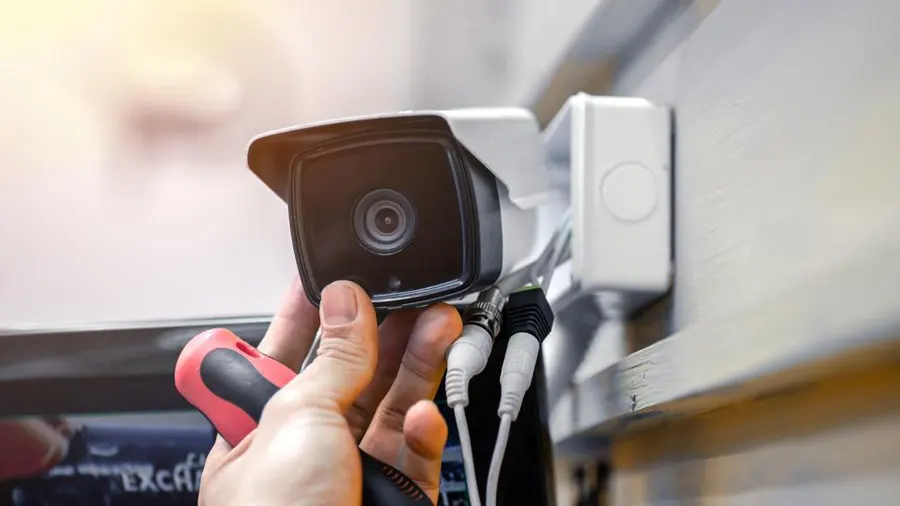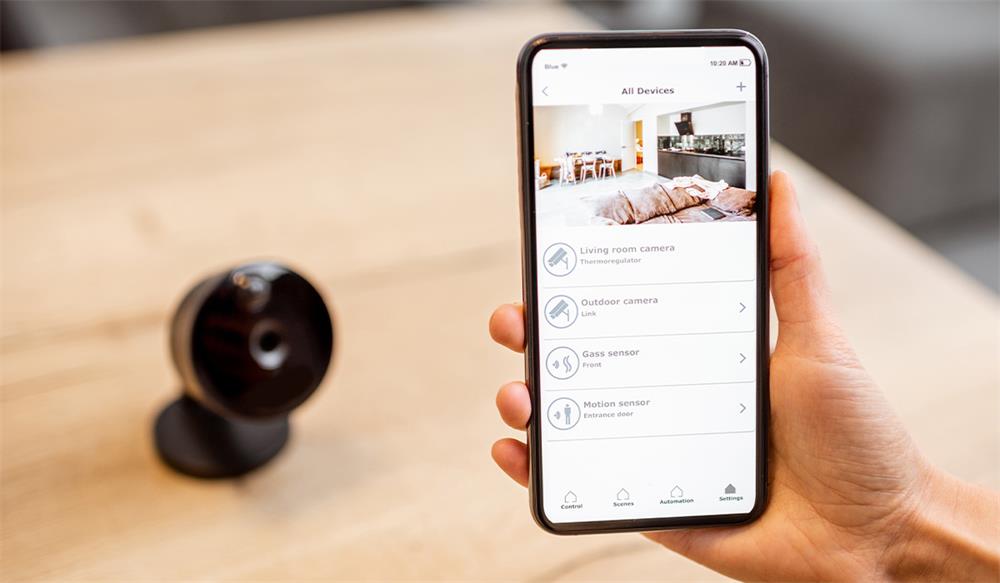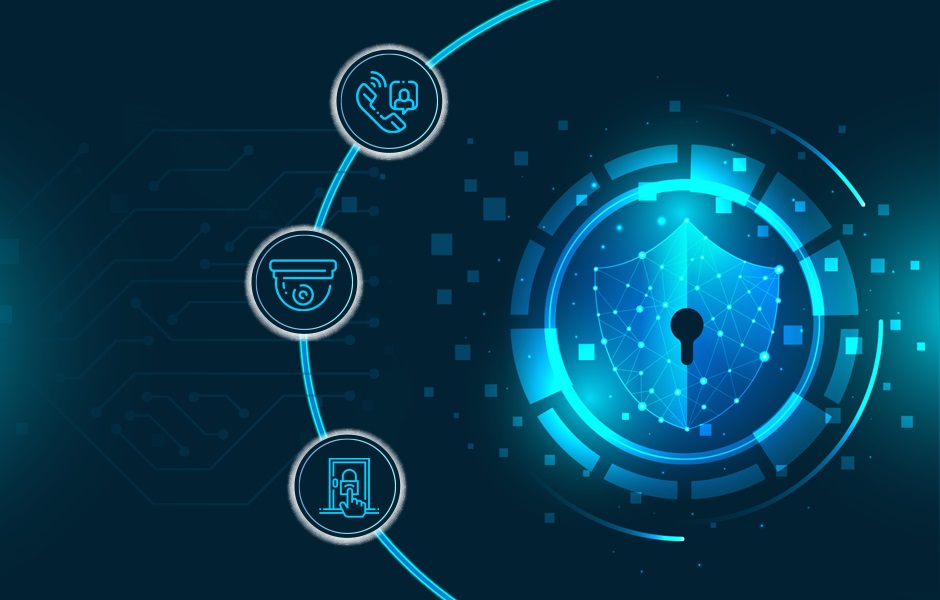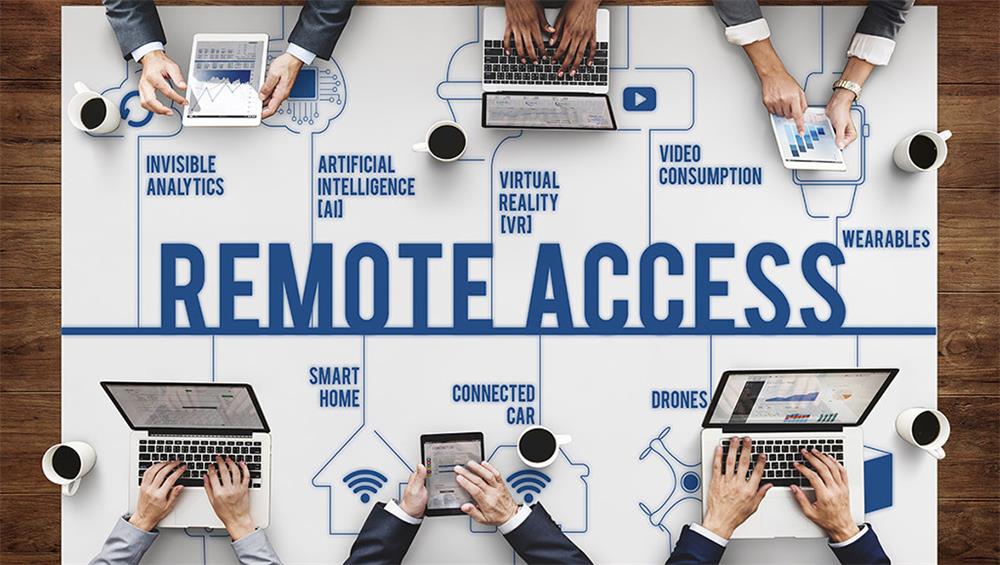Contents
- 1 Why Upgrading Your Security Cameras is a Must
- 2 Assess Your Current Security Camera System
- 3 Research New Security Cameras
- 4 Consider Upgrading to a Smart Security Camera System
- 5 Choose the Right Location for Your New Cameras
- 6 Install Your New Cameras
- 7 Connect Your Cameras to a Monitoring System
- 8 Maintain Your New Cameras
- 9 Conclusion
Why Upgrading Your Security Cameras is a Must
Security cameras have become an essential part of ensuring the safety and security of our homes and businesses. They help deter criminals, monitor activity, and provide valuable evidence in case of theft or any other criminal activities.
However, just like any other technology, security cameras also age and become outdated over time. Upgrading your old security cameras is necessary not only to ensure they are functioning correctly but to also take advantage of the latest technology advancements.
With new features like higher resolution, night vision, motion detection, and even smart home integration, you can enhance your home or business security significantly. Moreover, old cameras may be prone to malfunctions or breakdowns that could leave you vulnerable to security breaches.
Outdated video quality may render footage unusable in case of investigations leading to current troubles with insurance companies or legal authorities. Upgrading your security cameras provides peace of mind knowing you can keep an eye on your property at all times regardless of where you are.
With mobile access options on most modern surveillance systems you can check in on things while away from home or office. In this article we will explore the reasons why upgrading your old security camera system is essential and provide tips on how to choose new cameras that will meet your needs within budget constraints as well as installation tips for ensuring optimal coverage across key areas inside/outside buildings.
Assess Your Current Security Camera System
Evaluate the age, quality, and functionality of your current security cameras
Before making any decisions about upgrading or replacing your security cameras, it’s crucial to evaluate your existing system. Start by assessing the age of your cameras. If they’re more than five years old, it might be time for an update as newer models have better features and higher resolution.
Next, consider the quality of your current cameras. Are they capturing clear footage or are the images blurry and pixelated?
Poor image quality could affect their effectiveness in identifying intruders or suspicious activity. Functionality is another factor to consider.
Are your cameras functioning properly? Do they record video 24/7 or only when motion is detected?
Do you have remote access to view live feeds from anywhere with an internet connection? These are all important questions to ask yourself when assessing your current security camera system.
Determine if they are meeting your current needs
Once you’ve evaluated the age, quality, and functionality of your current security cameras, it’s time to determine if they’re still meeting your needs. Consider if you’ve expanded the area you want to monitor since installing them originally. Have there been any incidents where footage was needed but not captured?
It’s also essential to think about what features you need in a new camera system that aren’t currently provided by your existing one. For example, do you need night vision capabilities or motion detection alerts?
In addition to evaluating functionality needs, it’s important to think about how user-friendly your current system is. Can you easily access video footage and change settings without difficulty?
Your comfort level with using the system should play a significant role in determining whether it’s still meeting your needs. Overall, taking stock of what works well with your existing system and what doesn’t can help guide decision-making when upgrading or replacing security cameras.
Research New Security Cameras
Explore Different Types of Security Cameras Available in the Market
When researching new security cameras, it’s important to understand the different types available in the market. There are several types of security cameras to choose from, including bullet cameras, dome cameras, PTZ (pan-tilt-zoom) cameras, and more. Each type offers unique benefits and features that may align with your needs.
Bullet cameras are known for their cylindrical shape and are typically used for outdoor surveillance. They offer a wide viewing angle and are designed to be weather-resistant.
Dome cameras, on the other hand, have a rounded shape and can rotate 360 degrees to provide a full view of any area they are installed in. PTZ cameras allow for remote control of camera movement and zooming capabilities.
Look for Features That Align with Your Needs Such as High Resolution, Motion Detection, Night Vision, etc.
When choosing a new security camera system, it’s important to look for features that align with your specific needs. High-resolution cameras offer clearer images which may be beneficial if you need to identify faces or license plates.
Motion detection can alert you when there is activity in an area being monitored while night vision allows you to see footage even in low-light conditions. Other features to consider include two-way audio which allows you to communicate with individuals on camera remotely; smart home integration which allows you control your camera system through voice commands; and facial recognition which can identify known individuals who come into view of your security camera.
Overall, taking time to research different types of security cameras available in the market along with their various features will help ensure that you select a system that adequately meets your needs. By considering both type and features when upgrading or replacing old security systems will benefit both residential users who want peace-of-mind knowing their home is secure as well as commercial users who want to keep their business premises safe and secure.
Consider Upgrading to a Smart Security Camera System
The Power of Smart Security Cameras
If you’re looking for an upgrade to your old security cameras, consider going “smart.” These new systems come equipped with the latest technology and can provide several benefits, including increased coverage and convenience. With smart security cameras, you can easily monitor your property from anywhere in the world using just your smartphone or tablet.
Benefits of Upgrading to a Smart Security Camera System
There are several reasons why upgrading to a smart security camera system is a good idea. First off, they offer more advanced features than traditional cameras. For example, some smart cameras come equipped with motion detection technology that can alert you when someone enters the camera’s field of view.
In addition to this, many smart cameras come equipped with night vision capabilities that allow you to see clearly in low light conditions. This is especially useful if you live in an area where crime rates are high during the night hours.
Enhancing Your Home or Business’s Security
Smart camera systems can help enhance the overall security of your home or business. Imagine being able to monitor who comes and goes from your property while on vacation or out of town for business. With a smart camera system, this is entirely possible.
These systems also come equipped with cloud storage capabilities which means all recorded footage is stored remotely and can be accessed at any time from anywhere in the world. This makes it easier for law enforcement officials to identify suspects should any criminal activity occur on your property.
Upgrading to a smart security camera system is an excellent investment for anyone looking to enhance their home or business’s overall safety and security. Not only do these systems offer more advanced features than traditional cameras but they also provide greater peace of mind knowing that you have complete control over who enters and exits your property.
Choose the Right Location for Your New Cameras
Identify Areas That Need Coverage
When choosing the right location for your new security cameras, it is important to take into consideration the areas that need coverage. This means identifying entry and exit points, high-traffic areas, and blind spots that may be vulnerable to intruders.
For example, if you have a large backyard with several points of entry, you might consider placing cameras near doors or windows leading to the backyard. Or if you have a business with multiple floors, you might place cameras in elevators or stairwells.
Consider Factors Such as Lighting
Another factor to consider when choosing the right location for your new security cameras is lighting. Poor lighting can greatly impact the quality of footage captured by your cameras and make it difficult to identify potential threats or culprits.
To ensure optimal footage quality, try to position your cameras in areas with adequate lighting. If this is not possible, look into buying cameras with low-light capabilities or installing additional lights in areas where coverage is needed.
Consider Factors Such as Weather Conditions
Weather conditions such as rain, snow or extreme heat can also affect the performance of your security camera system. Be sure to choose weather-resistant models that can withstand changing weather patterns and protect against unwanted intruders. For example, bullet-style cameras are known for their durability and resistance to harsh weather conditions while dome-style cameras are better suited for indoor use.
Consider Factors such as Accessibility
When choosing the right location for your new security cameras consider accessibility. This means ensuring that they are installed at a height and angle that allows them to capture clear footage while remaining out of reach from vandals or criminals trying to tamper with them.In addition, consider installing security systems that require authorization before accessing your cameras.
This will prevent unauthorized individuals from accessing your cameras and ensure that footage is only viewed by authorized individuals. By taking into account these factors when positioning your security cameras, you can ensure that they are well-placed and capture clear footage of any potential threats.
Install Your New Cameras
Following the Instructions or Hiring a Professional Installer
Congratulations! You’ve successfully researched and acquired your new security cameras. Now, it’s time to install them.
The installation process can be tricky depending on the type of camera you purchased. If you are confident in your skills and understand the manufacturer’s instructions, you can try installing them yourself.
However, if you are unsure or don’t have enough experience, we recommend hiring a professional installer. The manufacturer’s instructions will guide you through every step of installing your new cameras – from mounting brackets to wiring connections.
Follow every detail carefully to avoid damaging the camera or losing any parts. Take your time and don’t rush things if you want to achieve optimal results.
Test and Adjust Camera Angles for Optimal Coverage
Once everything is wired correctly and securely mounted in place, it’s time to test how well they perform. Turn on the camera(s) first before testing them one by one so that all cameras’ angles can be adjusted simultaneously. Check each camera’s angle carefully to ensure that it covers the targeted area perfectly with no obstructions or blind spots.
It is advisable to test all viewing angles during different times of day when light conditions change to ensure that they capture clear footage under varying lighting conditions. If there are any issues with visibility or coverage, adjust camera angles accordingly by tilting them up/down/sideways as needed until all targeted areas are covered entirely without any dead zones or shadows.
Following manufacturer instructions and adjusting camera angles for optimum coverage will guarantee satisfactory results when upgrading or replacing old security cameras. Remember that proper installation is crucial for optimum performance; take your time during installation, testing streaming quality under different lighting conditions before finalizing positions for optimal coverage which will ensure full protection against any potential threats of burglary or vandalism at home and office premises alike.
Connect Your Cameras to a Monitoring System
Monitoring Systems Explained: Local Storage Devices and Cloud-Based Storage
So, now that you have your new security cameras set up, the next step is to connect them to a monitoring system. This allows you to store and access video recordings from your cameras. There are two main types of monitoring systems – local storage devices and cloud-based storage.
Local storage devices are typically small hard drives or microSD cards that you can insert into your camera or a separate device connected to it. The footage can be stored on the device itself and accessed via the internet or transferred to another device using physical media, such as USB drives.
This type of system is considered more secure since the footage is stored locally, but it can be limiting in terms of space and accessibility. On the other hand, cloud-based storage systems allow you to store your recordings remotely on servers owned by the service provider.
This type of system offers more space than local storage devices and is accessible from anywhere with an internet connection. However, there are some security concerns with cloud-based systems since all your data is stored remotely and could potentially be accessed by third parties.
Choosing between Local Storage Devices or Cloud-Based Storage
The decision between local storage devices and cloud-based storage largely depends on your individual needs and preferences. Some people might prefer local storage for its added sense of security while others might opt for cloud-based solutions for their convenience.
Local storage devices are recommended if you have limited bandwidth or unreliable internet connectivity as they don’t require an internet connection for storing recordings. Additionally, if privacy concerns outweigh convenience then perhaps this option would suit better.
Cloud-based solutions offer instant accessibility from any location as long as there’s internet connectivity which makes them ideal for remote users who need access to video footage without having physical access onsite. They also tend to offer much larger storage capacity than local storage solutions which is great for businesses or individuals who need to store a large number of recordings.
Cost Comparison
Typically, local storage devices are cheaper than cloud-based solutions since they don’t require subscription fees. However, the cost of local storage can add up if you need to purchase multiple drives or seek out other hardware.
Cloud-based solutions often offer free trials but require a monthly or yearly subscription fee. Consider all the costs associated with both options before making your final decision.
Final Thoughts
Choosing the right monitoring system for your security cameras is an important decision, as it determines how and where your footage will be stored and accessed. Both local storage devices and cloud-based solutions have their pros and cons, so it’s essential that you weigh up each option according to your individual needs and budget. Once you’ve chosen a monitoring system, make sure you set up alerts and notifications to ensure that you’re always aware of any suspicious activity around your property – this will give you peace of mind knowing that your security system is working as intended.
Maintain Your New Cameras
Clean the Lenses Regularly
One of the most important things you can do to maintain your security cameras is to clean the lenses regularly. A dirty lens can affect the quality of your footage, making it harder to see what’s going on. To clean your lenses, use a soft cloth or lens cleaning solution and gently wipe away any dirt or smudges.
Check for Damage
Another important aspect of maintaining your new security cameras is to check for any damage regularly. Check for cracks in the housing, loose wires, or other signs of wear and tear. If you notice any damage, address it as soon as possible to ensure that your cameras continue to function properly.
Test Your Cameras
Regularly testing your security cameras is also crucial for ensuring they are functioning properly. Test each camera by walking around the area it covers and making sure there are no blind spots or areas without coverage. Check that motion detection is working correctly and that night vision is functioning as expected.
Conclusion
Upgrading and replacing old security cameras can greatly enhance your home or business’ safety and security. With so many new types of cameras available on the market today, it’s easier than ever before to find an option that meets your needs and budget.
Whether you choose a traditional system or opt for a smart system with remote monitoring capabilities, ensure that you install them in high-risk areas such as access points or valuable asset storage locations. Remember also that regular maintenance of these systems will help keep them functioning optimally over time.
By cleaning lenses regularly, checking for signs of wear and tear often, testing their performance occasionally – these simple steps will go a long way towards improving longevity while providing peace-of-mind knowing every corner is covered effectively. Overall whether upgrading an existing system from scratch or replacing old technology, investing in new security cameras is an investment that will ultimately pay off in greater safety and security.

